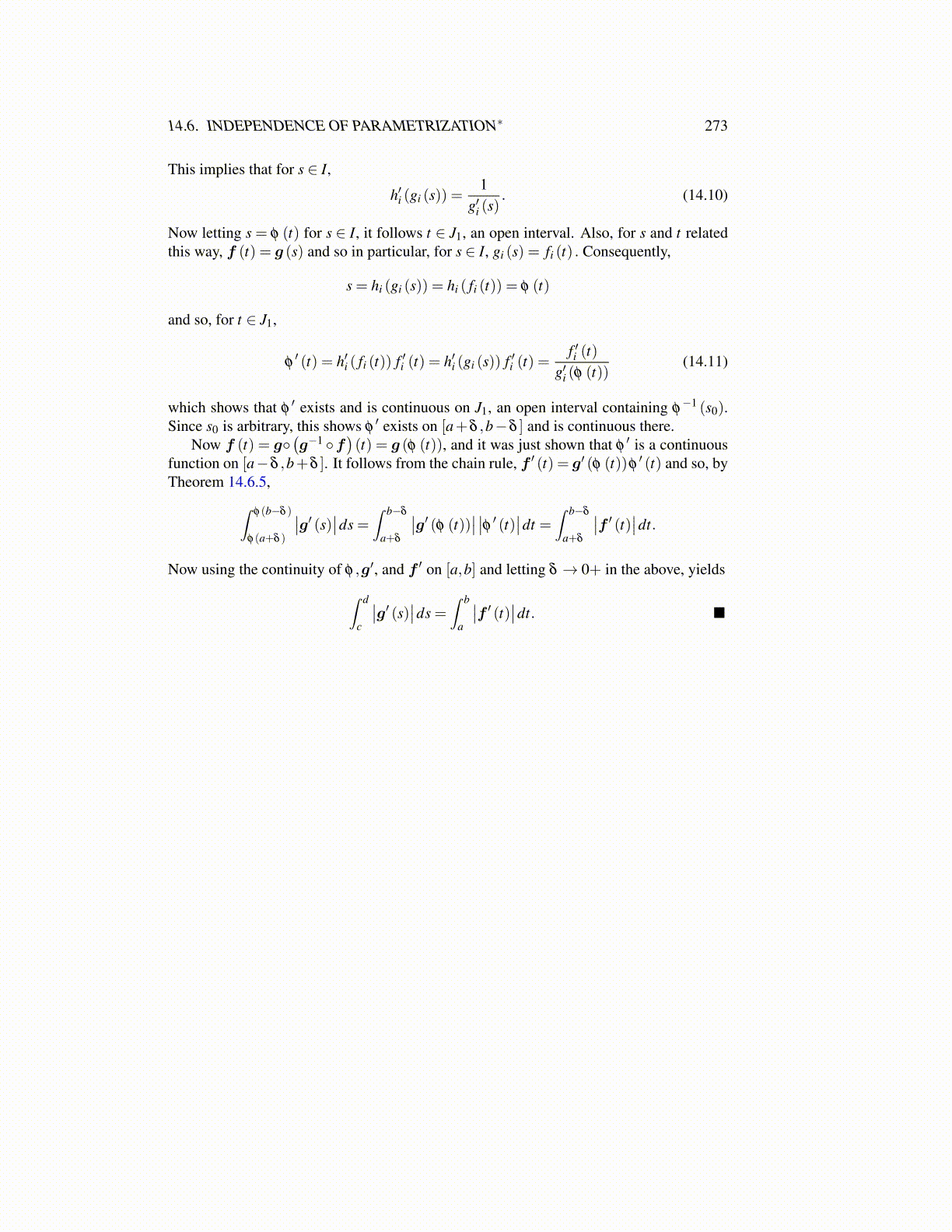
14.6. INDEPENDENCE OF PARAMETRIZATION∗ 273
This implies that for s ∈ I,
h′i (gi (s)) =1
g′i (s). (14.10)
Now letting s = φ (t) for s ∈ I, it follows t ∈ J1, an open interval. Also, for s and t relatedthis way, f (t) = g (s) and so in particular, for s ∈ I, gi (s) = fi (t) . Consequently,
s = hi (gi (s)) = hi ( fi (t)) = φ (t)
and so, for t ∈ J1,
φ′ (t) = h′i ( fi (t)) f ′i (t) = h′i (gi (s)) f ′i (t) =
f ′i (t)g′i (φ (t))
(14.11)
which shows that φ′ exists and is continuous on J1, an open interval containing φ
−1 (s0).Since s0 is arbitrary, this shows φ
′ exists on [a+δ ,b−δ ] and is continuous there.Now f (t) = g◦
(g−1 ◦f
)(t) = g (φ (t)), and it was just shown that φ
′ is a continuousfunction on [a−δ ,b+δ ]. It follows from the chain rule, f ′ (t) = g′ (φ (t))φ
′ (t) and so, byTheorem 14.6.5,∫
φ(b−δ )
φ(a+δ )
∣∣g′ (s)∣∣ds =∫ b−δ
a+δ
∣∣g′ (φ (t))∣∣ ∣∣φ ′ (t)∣∣dt =
∫ b−δ
a+δ
∣∣f ′ (t)∣∣dt.
Now using the continuity of φ ,g′, and f ′ on [a,b] and letting δ → 0+ in the above, yields∫ d
c
∣∣g′ (s)∣∣ds =∫ b
a
∣∣f ′ (t)∣∣dt. ■